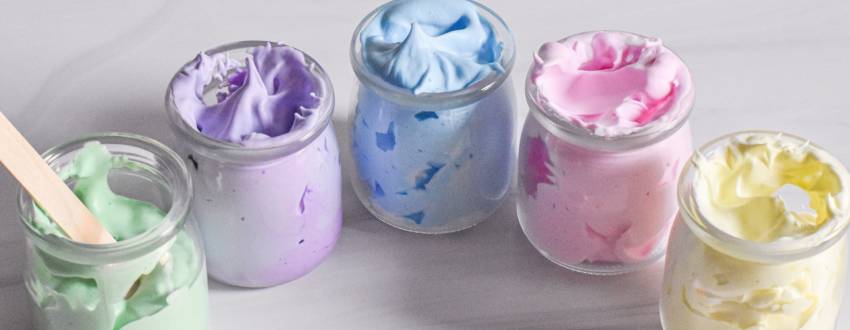Imagine crispy schnitzel sizzling in the frying pan.
The aroma fills the house. Your family gathers ‘round in anticipation. Your mouth waters.
But then you see that the schnitzel got soggy. Or your kids won’t eat it because the coating fell off. And that mess on your counter isn’t cleaning itself.
Whether it’s schnitzel, fried fish, or eggplant parmesan, sometimes breaded foods are hard to get right.
Dredging and Breading
Before we get into the process, first, let’s go over some definitions:
Dredging is lightly coating food in a dry ingredient, such as flour.
Breading is dipping the food into beaten egg to help the coating stick. Proper breading is a three-part process, producing a thick crust that won’t fall off:
1. Dredge the food in flour. This step will help the egg stick to the food.
2. Dip the food in a liquid, usually egg, to hold an outer coating.
3. Dredge again in an outer coating, such as breadcrumbs.
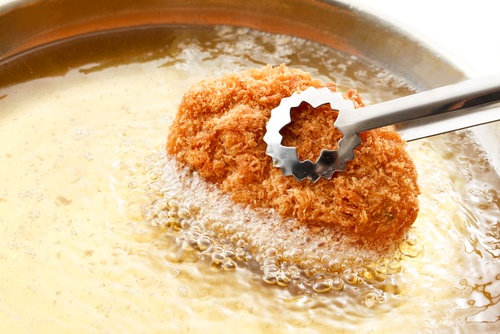
We usually dredge or bread raw foods before frying or sautéing them because the coating:
- Gives the food a crispy, browned crust.
- Adds flavor and texture.
- Helps absorb more flavor from the oil.
- Prevents food from sticking to the pan.
- Seals in moisture so the food won’t dry out.
So how do you bread your food to produce the crispiest, tastiest results? Here are seven pro tips:
Tip #1: Set yourself up for success
Before you start, arrange your supplies from left to right in shallow pans:
1. Un-dredged food
2. Flour (or another dredge)
3. Beaten egg
4. Breadcrumbs (or another coating)
5. Pan for breaded items
(Do right to left if you’re a lefty.)
Once the food is set, you can work in an efficient assembly line: First, coat the food in flour and shake off any excess. (If you only want to dredge, you can stop here!) Next, dip the dredged food in egg and let the excess drip off. Last, pat on the outer coating and transfer to the final pan.
Tip #2: Keep your hands clean
Use your left hand for dry handling and your right hand for wet handling. (Switch if you’re a lefty.) So, use your left hand for the initial dredge and to drop the food into the egg. Use your right hand to coat the food in the egg and final coating. This will keep your hand from becoming a pasty mess and the dredge from getting soggy.
You can also bring a small bowl of water to your workstation to clean your right hand occasionally.
Tip #3: Timing is everything
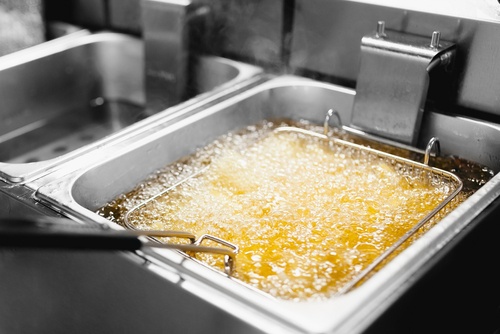
For maximum crispiness, fry, sauté, or cook the food as soon as possible after dredging or breading it. If the food sits, the coating will get soggy.
Tip #4: Safety first
If you’re working with fish, chicken, or meat, keep in mind food safety rules:
- Raw, perishable food shouldn’t sit out at room temperature for too long. If you’re frying a large amount you may want to do it in batches. Keep the raw ingredients in the fridge until you need them.
- Don’t return the cooked food to an unwashed pan that held raw food.
- Discard any leftover coating or egg that touched raw food.
Tip #5: Keep it dry
Your raw food needs some moisture to hold the dredge, but too much will make it soggy. Most food comes out of the package wetter than you want it to be. Pat the food dry before dredging.
Tip #6: Season it
For tastiest results, season BOTH the dredge and the final coating with salt, pepper, or other spices. You can also use pre-seasoned breadcrumbs.
Tip #7: Be creative
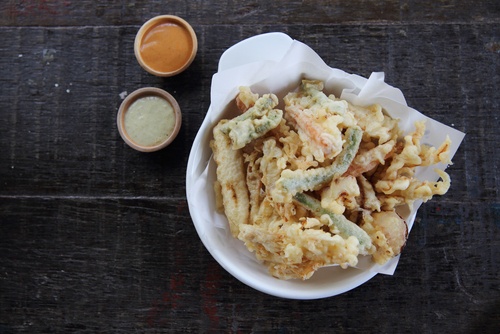
Flour and breadcrumbs are basic coatings, but you have many, many other options, including ones that are gluten-free and kosher for Passover (only two months away!)
For the dredge, any finely ground powder will work:
- Almond flour (and other nut flours)
- Chickpea flour
- Coconut flour
- Corn flour
- Cornstarch
- Gluten-free flour
- Millet flour
- Potato starch
- Rice flour (brown and white)
For the coating, consider:
- Coconut (try Coconut Crusted Chicken Fingers)
- Crushed crackers (try Crackered Tilapia)
- Crushed pretzels
- Grated cheese (for parve foods)
- Ground nuts (try Pistachio Chicken Strips)
- Potato chips
- Potato flakes
- Tortilla chips
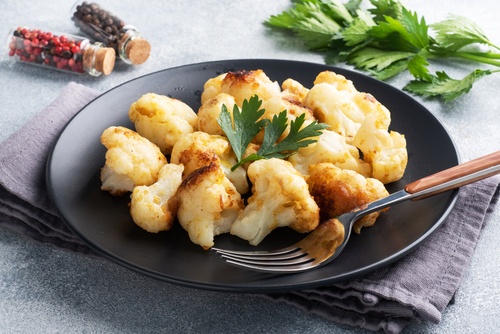
And don’t limit yourself to breading chicken or fish. You can also bread vegetables such as:
- Broccoli
- Carrot
- Cauliflower (try Breaded Sweet Chili Cauliflower)
- Eggplant
- Mushrooms
- Pepper
- Zucchini
Have fun and experiment with tastes and textures. You really can’t go wrong. Keep in mind these few easy tips, and you and your family will enjoy crispy, delicious, breaded foods every time.




